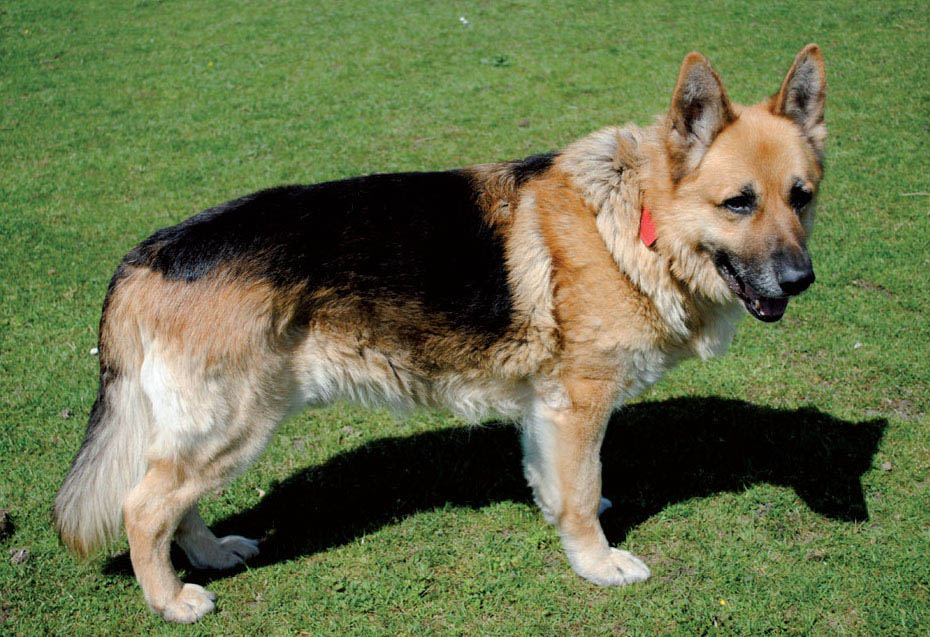A PRACTICAL GUIDE FOR OWNERS AND BREEDERS
GERMAN
SHEPHERDS
ALLISON CLARKE
AND LIZZY BROWN

THE CROWOOD PRESS

First published in 2016 by
The Crowood Press Ltd
Ramsbury, Marlborough
Wiltshire SN8 2HR
www.crowood.com
This e-book first published in 2016
Allison Clarke and Lizzy Brown 2016
All rights reserved. No part of this publication may be reproduced or transmitted in any form or by any means, electronic or mechanical, including photocopy, recording, or any information storage and retrieval system, without permission in writing from the publishers.
British Library Cataloguing-in-Publication Data
A catalogue record for this book is available from the British Library.
ISBN 978 1 78500 091 1
Disclaimer
The author and publisher do not accept any responsibility in any manner whatsoever for any error or omission, or any loss, damage, injury, adverse outcome, or liability of any kind incurred as a result of the use of any of the information contained in this book, or reliance upon it.
CONTENTS
INTRODUCTION
Having never written, or even considered writing a book, imagine our surprise when we were asked to write German Shepherds A Practical Guide for Owners and Breeders.
Although we come from very different backgrounds and from the opposite ends of the country, we share a common passion: our love for animals, and we have both owned German Shepherds throughout our lives. We met through the world of dog rescue many years ago, when we were both volunteers for a German Shepherd rescue, each co-ordinating the rescue and rehoming of dogs in our own part of the country.
But we wanted to do more: we wanted to be proactive in trying to change the way dogs are treated as a disposable commodity in modern times, rather than just being there to pick up the pieces. We believed that every dog that came through a rescue should be neutered, microchipped and vaccinated. Therefore in 2012 German Shepherd Rescue lite came into existence with these goals, and we were very proud to achieve registered charity status within six months.
With our remarkable team of volunteers, all of whom give up their time and money for this wonderful breed, we have been able to help hundreds of German Shepherds. We give every dog a chance however young or old, and take in many from the numerous pounds across the country, many of which operate their lawful requirement of keeping a stray dog for seven days, and if it is not reclaimed, putting it to sleep. This is the harsh reality of modern-day life, and with the increasing number of back-street breeders, and dogs coming in from abroad, the problems are further exacerbated. We have also been known to stray from our beloved breed, and have helped many others that would otherwise have lost their lives simply because they were no longer wanted. We act as social services for these dogs.
Writing this book has been tough going at times, mainly from the time aspect of fitting in the research and the writing alongside running a rescue, and also, of course, around the normal routine of everyday life. But we have learnt an incredible amount along the way, in areas we have not been involved in previously, such as breeding and showing. We are great believers that you can never stop learning.
We hope you will enjoy reading our book as much as we have enjoyed its creation, and we hope that along the way we have highlighted the issues faced by dog rescues across the country. With power in numbers, we would like to believe that one day our dogs will receive the proper legal status and protection they deserve, and we will continue to fight for change wherever we can.

A BRIEF HISTORY OF THE BREED AND BREED STANDARDS
EVOLUTION OF THE GERMAN SHEPHERD
The German Shepherd is remarkably similar in appearance to its ancestor the wolf, from which all todays breed of dogs have evolved.
The relationship between man and dog has existed since prehistoric times, with dogs being bred predominantly for the roles they could fulfil, and not how they looked. But due to the dramatic rise in pet ownership in the last century the shift of emphasis has been towards a dogs appearance and social temperament, and this shift is probably at the root of many of the physical and behavioural problems now seen in many modern breeds of dog. However, the German Shepherd dog has predominantly made the change from a working role to a pet and companion with few problems.
SURVIVAL INSTINCTS
Survival imperatives for any animal are feeding, reproducing, and staying out of trouble.

The dogs ancestor, the wolf.
Animals change physically, triggered by changes in environment, and make behavioural adaptations to ensure survival. The domestication of the wolf to a dog occurred when man began to adopt a village way of life. The wolf soon realized that the village gave a continual supply of food if it lived close enough to exploit the situation, with rubbish dumps being a good place to scavenge and a safe place to leave their young. Therefore these youngsters soon learnt to live and survive close to man.
With mans switch from hunter/gatherer to crop farmer, the wolf provided man with a source of easily obtainable meat, so their presence would have been tolerated. And as the resident population reached maturity, breeding would have been encouraged to ensure future supplies.
The direct physical contact and socialization of village-born pups occurred as a crucial part of the taming and domestication process. Indirectly the pups would have been encouraged to retain playful characteristics, and not to develop the fully dominant or predatory behaviours typical of adult wolves. These characteristics would then become established in the adult population of the village dogs. Approximately 60 per cent of the human race still has a cultural attachment to eating dog meat to some degree.

The modern German Shepherd dog.
Dogs later became prized as hunter/guard working companions, and were transported around the world via trade routes to places where they had not evolved through the village domestication process. As working animals, dogs became much valued, though the dog type that excelled at herding in one settlement may have looked entirely different to the dog evolved for the same job in another settlement. Selection for breeding was based on the dogs ability to do the job required, and this is what established the appearance of his type and his physical characteristics, according to whether his job was hunting, herding, guarding or retrieving.
HISTORY OF THE GERMAN SHEPHERD
In Europe dogs were bred to preserve traits that assisted in their job of herding and guarding sheep. In Germany this was done by selecting and breeding dogs that the villagers felt had the skills necessary, such as intelligence, speed, strength and a keen sense of smell. This resulted in dogs with the skill set required, but from one community to another the dogs would differ significantly in appearance and ability.
















